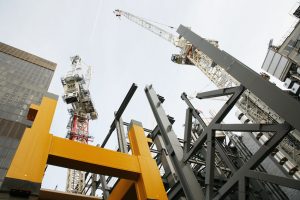Design Mediation
There has been a growing and more notable demand for cooperative conflict resolution and mediation is in the area of design. This could be interior design, exterior design, office design, community planning, government, and the like. Some of the conflict issues involve the following dynamics:

For example, architects might not understand the role and scope of the interior designer, viewing them as a glorified interior decorator. While architects must be concerned with city, county, and local rules, HOAs, architectural committees, and related formal rules, designers are more concerned with the direct user experience. However, we can see that there is overlap between the two, and this can lead to disagreement.
Another example of conflict arises when clients require a very tight delivery schedule for both architecture and interior design. The interior designer can consider the design thematically but needs the architectural layouts before creating drawings and sample boards which need time to be well thought through to be convincing. A growing area of concern involves the sourcing of materials, which can intrude upon an architect’s expectations with builders, which ultimately can affect client’s design expectations. Renovations can also cause any of the conflicts we mention above, and therefore, it can be useful to hire a project manager/mediator who can sort out differing visions and budgets.
There are also issues concerning structure, space planning, materials and sourcing, land use, neighbors, HOA rules, and client issues. For example, a designer might see structure differently than the architect, and this is a difference in perspective that must be resolved.
Space planning issues can emerge depending upon the size of a structure relative to a lot, the overall design concept, and the neighborhood. Good collaboration and communication can reduce friction here, but the clients should be aware of potential issues.
The sourcing of materials has become a trigger issue for many people who are more aware of human and animal exploitation, and environmental sustainability.
Land use issues are always involved in design (and often land rights issues as well) and while it is usually straightforward to follow local and state rules, there can be ambiguous interpretations over which the professionals involved in a project can disagree.
There are always neighbor issues, often concerning views, noise, light, and overall presence. This is an area ripe for conflict, especially when a person moves in and renovates, or develops raw land next to someone who has been in the neighborhood for a long time. This can involve HOA rules, especially if they were not drafted precisely, and especially if it is a condominium project.

There are always potential conflict issues if there are at least two clients, for example, a married couple. If the architect and design firm don’t have clear communication with the clients, expectations are muddled, and because there are several professionals involved, conflict can emerge.
One of the newer issues is emerging from concern with sustainability, green energy sourcing, animal rights, and clean water. Humans are changing their relationships to nature, non-human animals, and other humans, which can cause false expectations, unstable expectations, and therefore conflict. Anytime there is change of this magnitude, there are humans who quickly embrace that change, and others who are slower, so this also can create unstated differences in perceptions which lead to conflict.
Hiring a first-rate mediation team can easily and effectively solve these problems in a creative, win-win approach so that everyone is satisfied.
Frequently Asked Questions / FAQS
What is design mediation?
Design mediation can be used when two or more parties have disagreements about the internal or exterior residential or business design, which can include architectural, engineering, or construction issues. Instead, of choosing protracted litigation the parties choose cooperative mediation to resolve their disagreement.
What are the dynamics of mediation?
The conflict partners commit to a win-win, cooperative process in which each party feels heard, and that their stakeholder interest is respected.
Are attorneys involved?
Sometimes, parties will also hire consulting attorneys, who step back during the mediation process. In many cases, no representing or litigating attorneys are involved, which creates a less adversarial mediation process.
Does the mediation team do any research?
Design and construction mediation can involve complex legal and mathematical issues, so good mediation involves extensive research and preparation.

How do the meetings take place if stakeholders live in different cities, states, or countries?
Mediation meetings can occur through online, Internet services such as Zoom, Skype, Go to Meeting for convenience.
Does design and construction mediation address legal issues?
Yes. Design and construction mediation takes the law into account, as well as the parties’ needs and preferences. The law is addressed in an amicable way so the parties can decide instead of a judge.
Is design and construction mediation legally binding?
The mediation itself is not legally binding until the parties have a signed, written contract.
What happens if mediation does not work in design and construction disagreements?
The parties always have the option to hire legal counsel if they cannot work out their conflict in mediation.
Does mediation work?
If two or more parties are committed to working out a resolution; if they understand and appreciate the other party’s interests; and if they are willing to seek new creative options they might not have considered before, mediation is often the best type of conflict resolution design.
Is mediation expensive?
Mediation is often much less expensive than litigation because there are no lawyers and judge involved. There are no court hearings, no court calendar, which can lead to a much more streamlined, efficient process.
